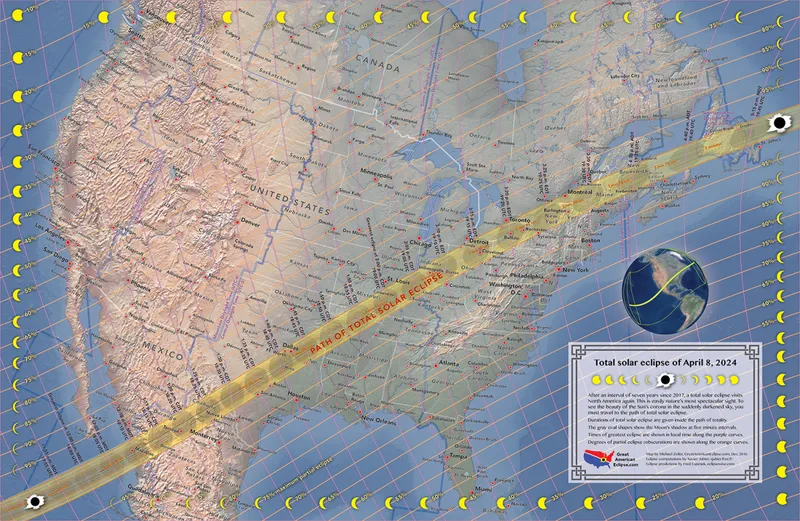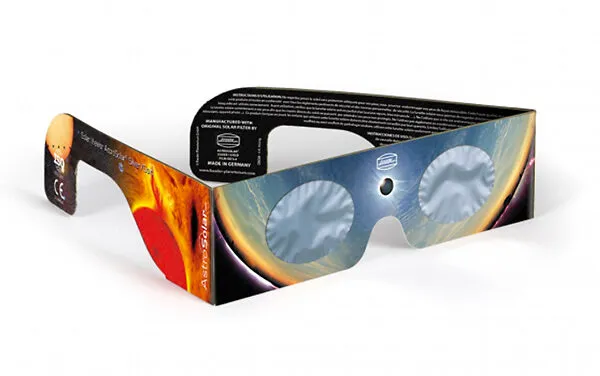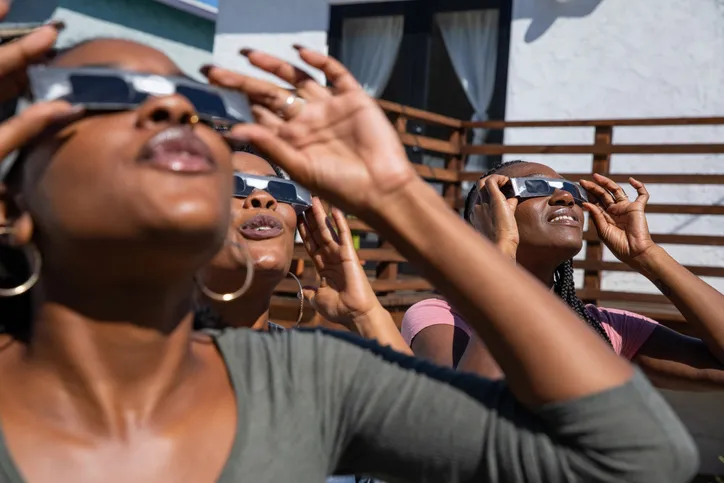Tomorrow, April 8, a solar eclipse will be visible across the USA, Canada and Mexico.
Solar eclipses are a great event, and millions of people across North America will be excited to see the Moon pass in front of Earth, resulting in one of nature's greatest spectacles.
Those within the 'path of totality' will see the Moon cover the entirety of the Sun's disc - a total solar eclipse.
Those outside the path of totality will see the Moon cover a portion of the Sun's disc - a partial solar eclipse.

A solar eclipse involves looking directly at the Sun and, as such, requires safe equipment to do so.
Some observers choose to use a solar telescope to get close up views of the action, but a good, certified pair of solar eclipse glasses will enable you to observe the event safely too.
The important caveat here is that, if you want to use solar eclipse glasses to observe the April 8 event, you need to make sure they are properly certified and safe to use.
Solar eclipse glasses use solar filters. These filter sunlight, enabling safe observation of the Sun.
But how can you know whether or not your solar eclipse glasses are safe?
The American Astronomical Association has released a guide to choosing the right eclipse glasses, and what to avoid.
Here's some of the best advice from the AAA when choosing your glasses for the April 8 solar eclipse.
What to know when choosing safe eclipse glasses

The totally eclipsed Sun (when the Moon covers the entire solar disc) is technically safe to look at without eye protection (but only attempt this if you know what you are doing).
During the partial phases of a total solar eclipse, and throughout a partial eclipse, the Sun must be observed through safe solar filters such as certified eclipse glasses.
Safe solar eclipse glasses block all but a small portion of the Sun’s ultraviolet, visible and infrared light, preventing damage to eyesight.
Solar filters that provide safe views of the Sun generally transmit between 1 part in 100,000 (0.001%) and 1 part in 2,000,000 (0.00005%) of its visible light.
Look for the International Organization for Standardization (ISO) mark, the ISO 12312-2 standard for filters for direct observation of the Sun.
Beware false certification! Check for a manufacturer's report showing compliance with ISO 12312-2 based on tests at an accredited laboratory.
The AAA says it has come across test reports that are "at best questionable and at worst clearly bogus".
Unsure? Check the American Astronomical Association's list of vendors of safe solar viewers, listing products the AAA says it has tested for compliance with safety regulations.

Ignore claims that NASA approves or endorses a product. "NASA doesn’t do that," the AAA says.
The exception to the rule, the AAA says, is American Paper Optics in Tennessee, which NASA selected to make its eclipse glasses.
Ignore claims of glasses that block 100% of ultraviolet (UV) and infrared (IR) radiation. Filters that meet the ISO standard transmit small, safe amounts of UV and IR radiation.
To be really safe, observe an eclipse indirectly using solar projection or casting shadows using a kitchen colander! More about this in our guide on how to safely view a solar eclipse.
Find out more by visiting the AAA's guide to safe solar eclipse glasses
Are you observing the total solar eclipse of April 8? Let us know how you got on by emailing us at contactus@skyatnightmagazine.com
